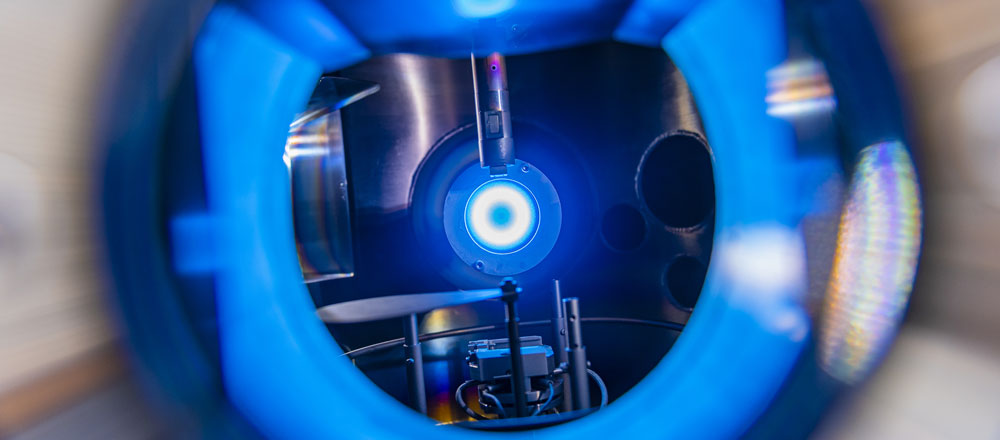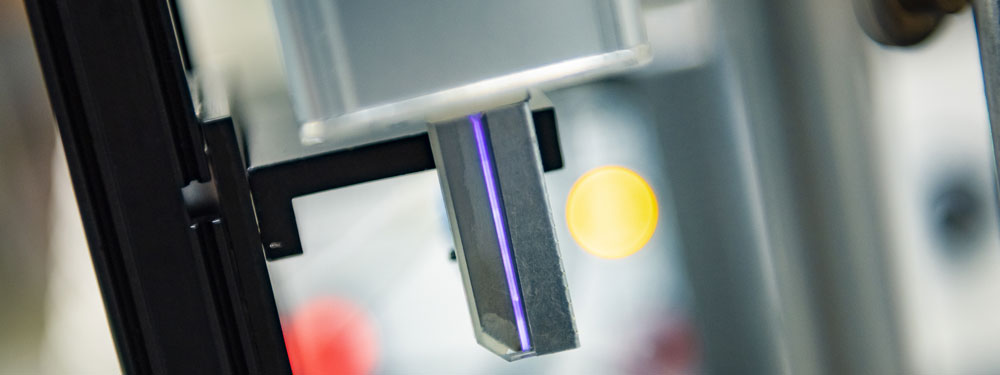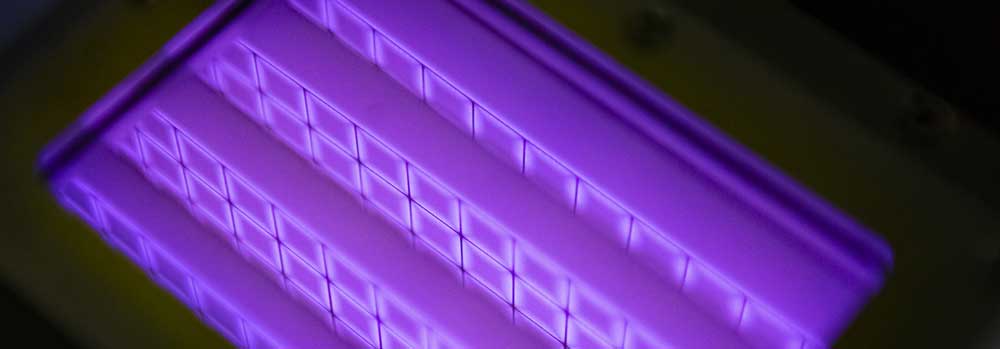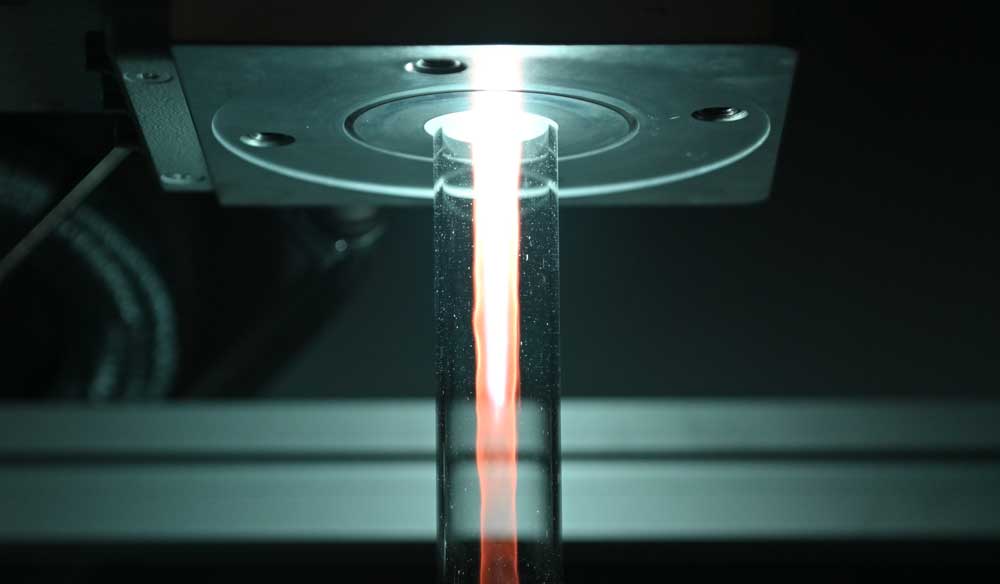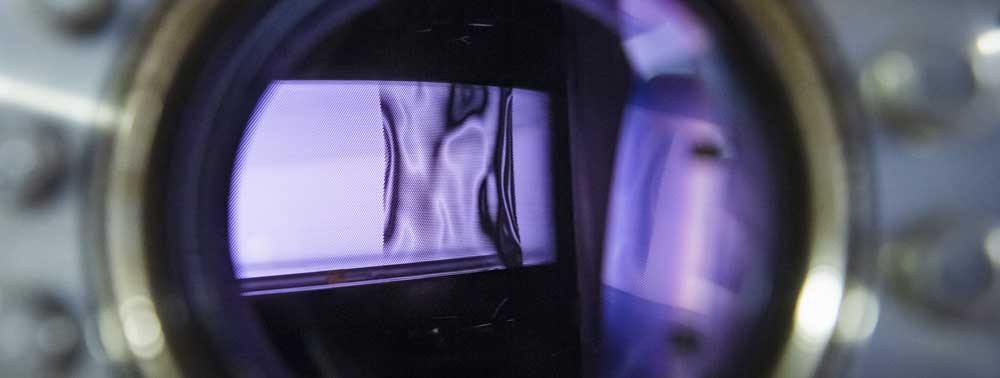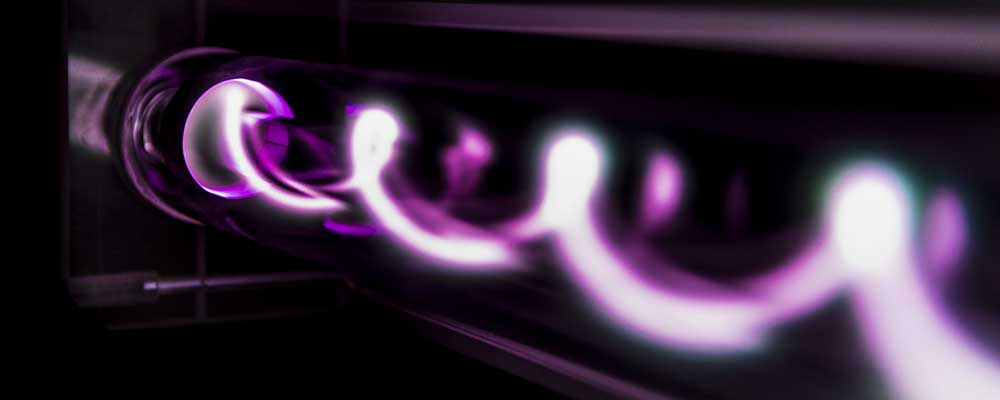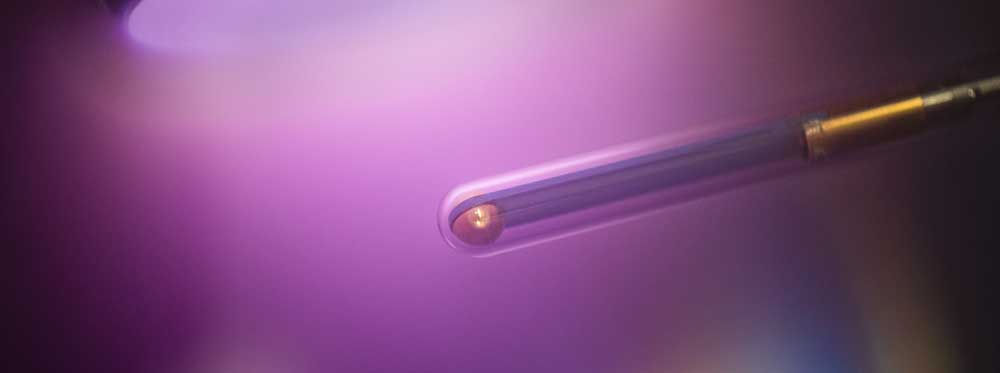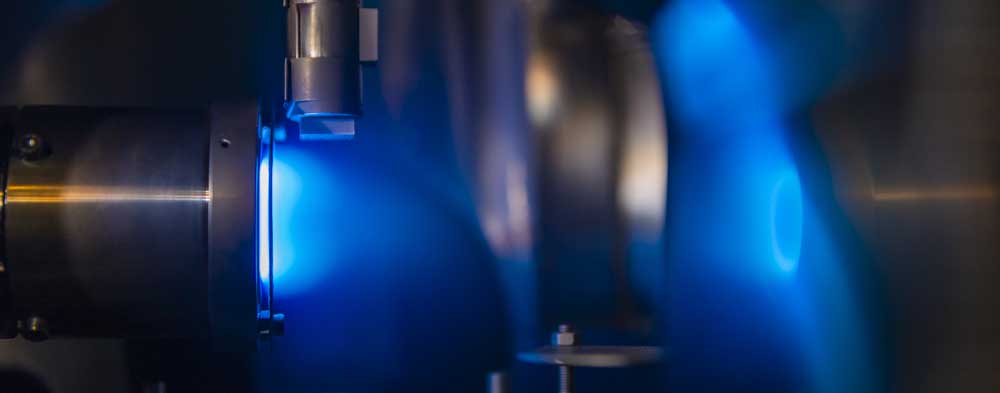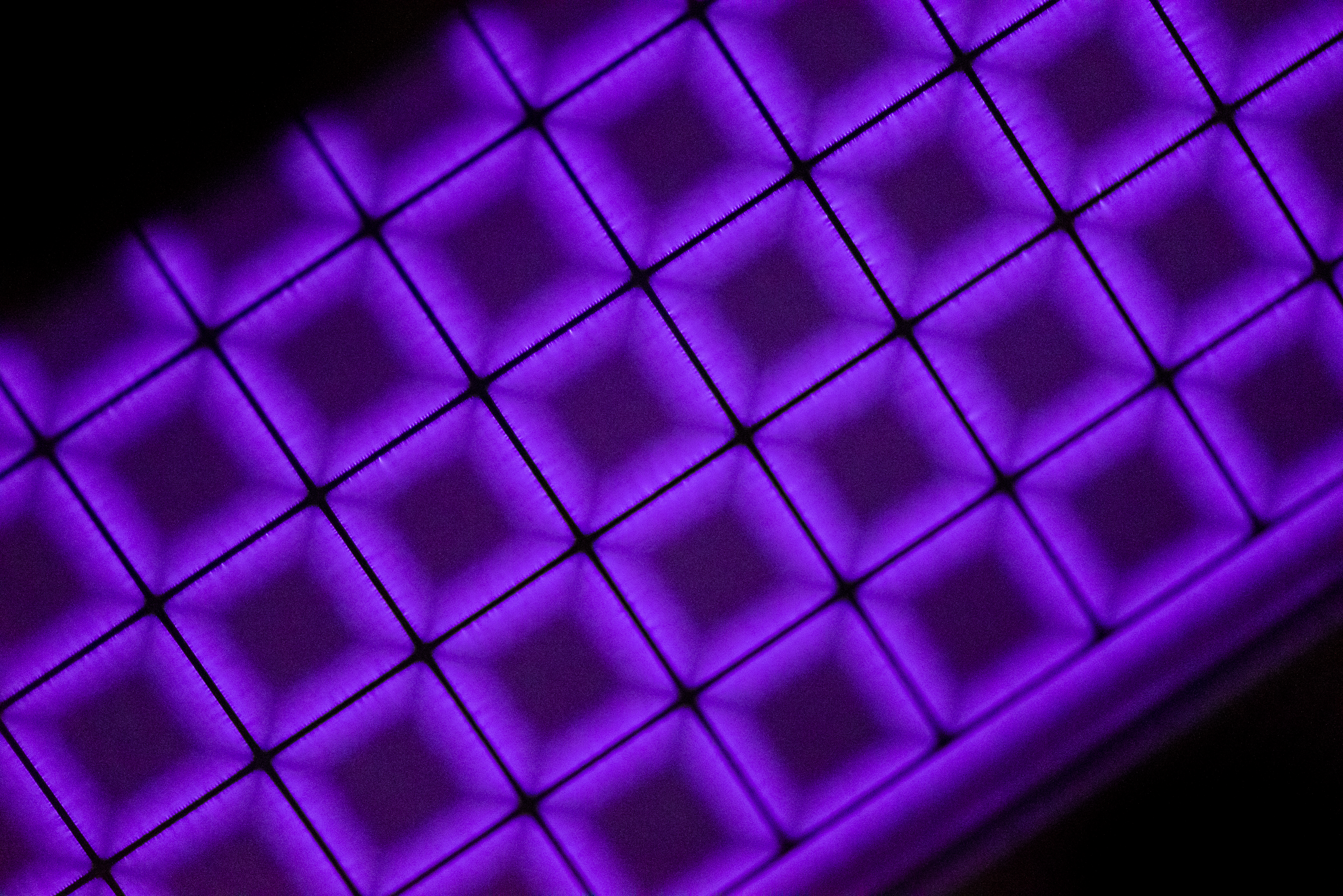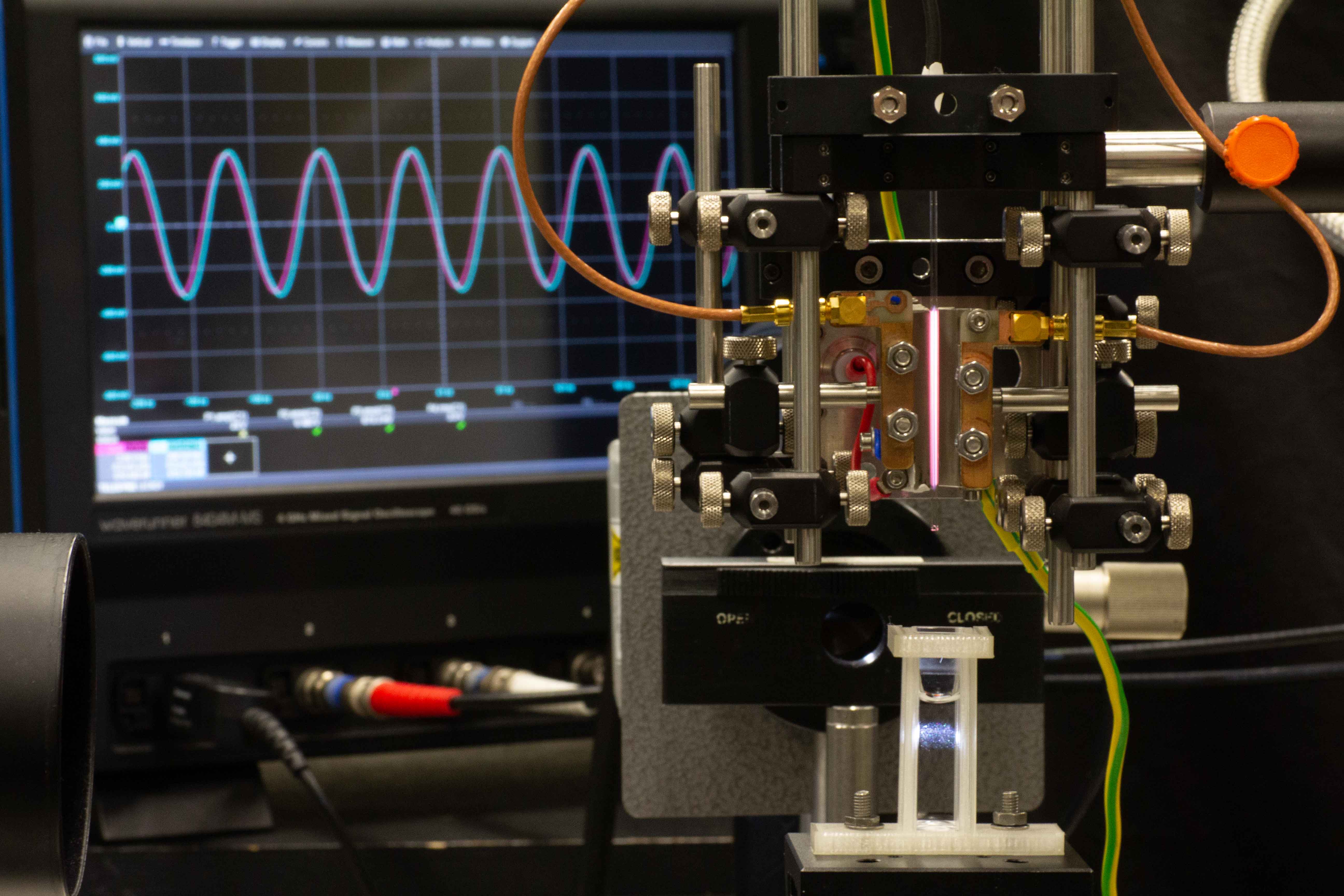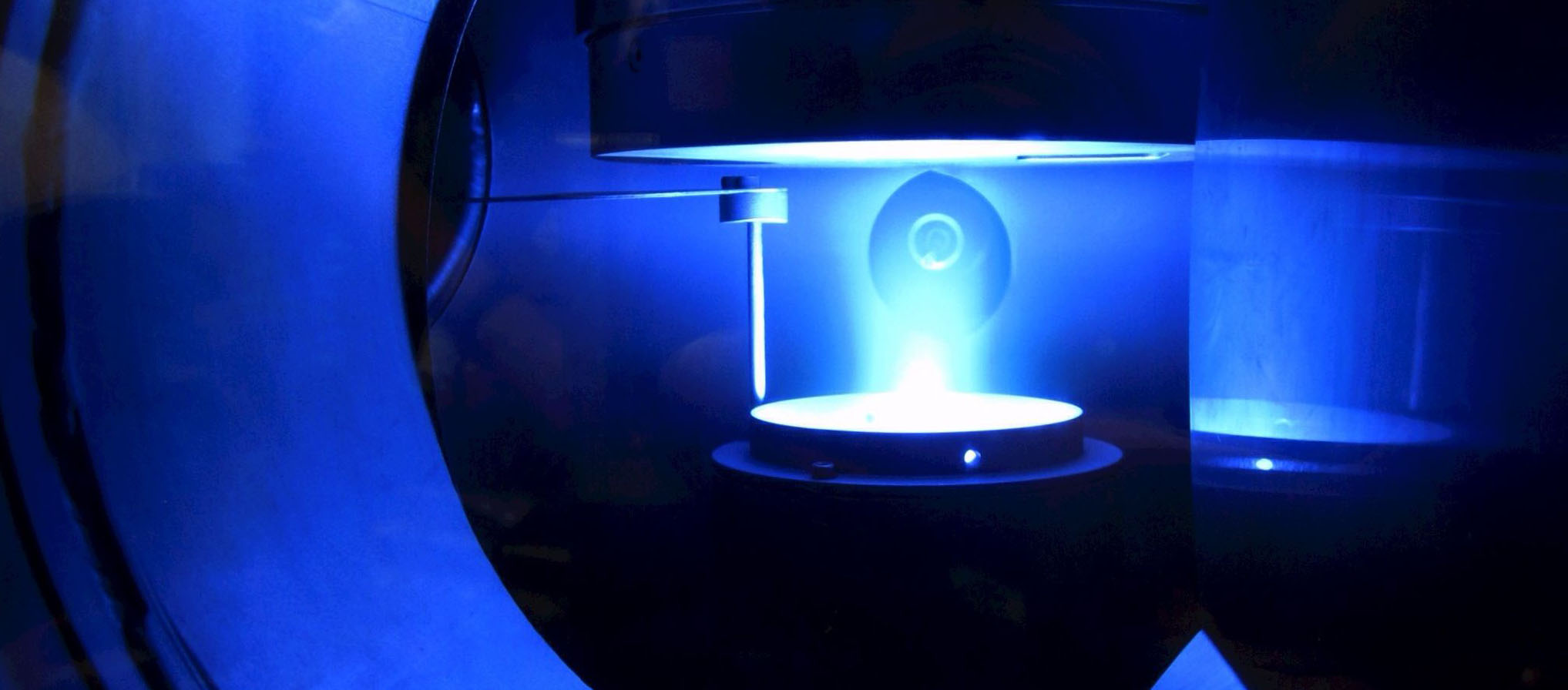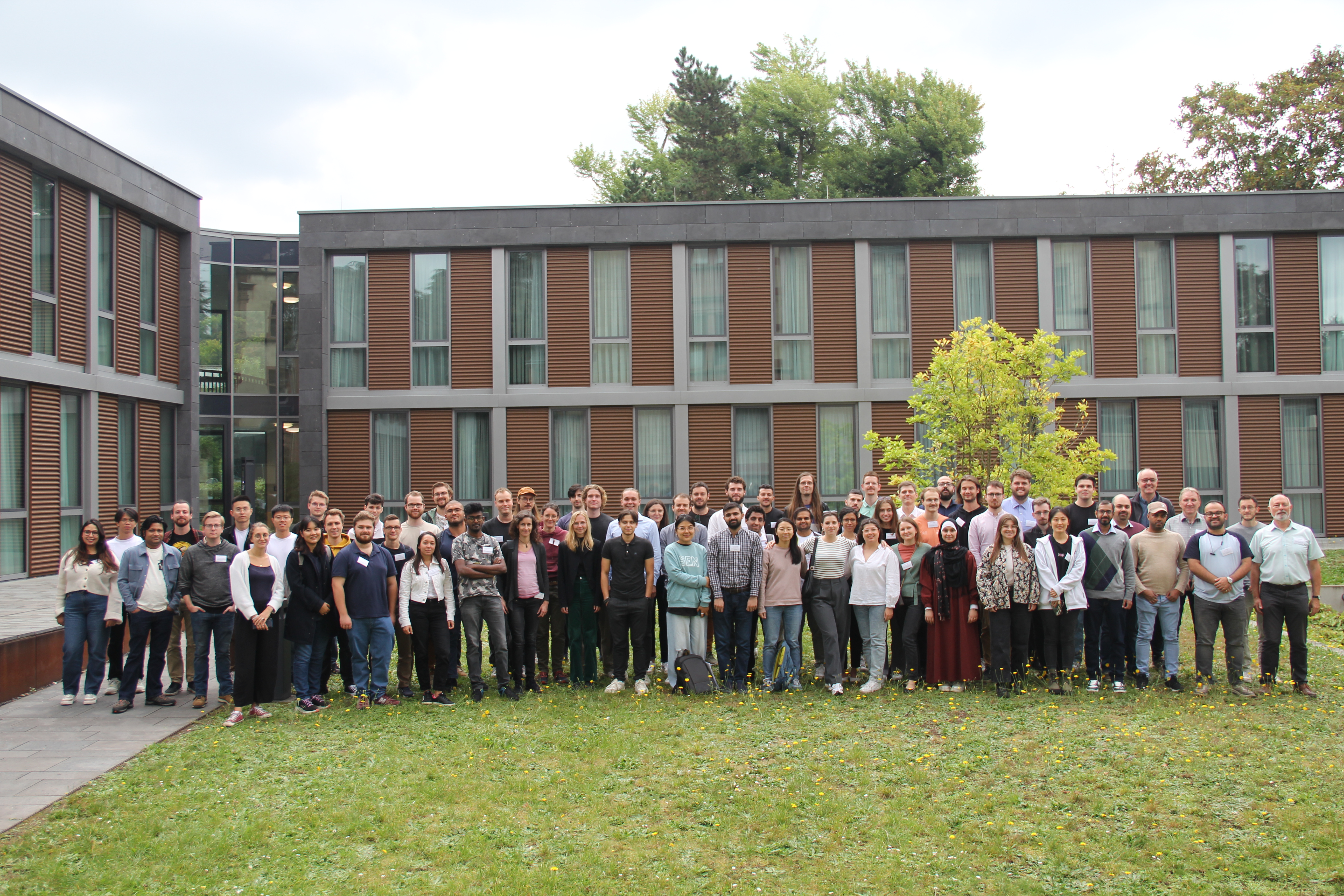- Details
Live monitoring of the inner plasma process
Dr. Moritz Oberberg and two team colleagues are preparing to set up the spin-off “House of Plasma”. The company is launching the Multipole Resonance Probe in various designs. It allows industrial plasmas to be monitored in real time to ensure that they help to consistently apply identical, faultless coatings to surfaces, for example.
Mr. Oberberg, if someone had told you five years ago that you would plan to start a company today, what would you have said?
The idea of setting up a spin-off with measurement technology is not that new. My predecessor, who completed his doctorate in 2015, was already talking about it, but it wasn’t fully developed at the time. Personally, I could always picture myself being self-employed. The timing depends, of course, on the development and the response. Still, I’ve been thinking about self-employment for a while. I have a background in this field and, in addition to my education, I also have the necessary contacts.
The company has not been established yet. How do you keep busy at the moment?
Well, I’m not alone, the three of us share all tasks that come up. We are currently planning industrial tests with a company for our latest designs – we have to travel abroad for this purpose. There’s a lot of red tape. It’s not so easy to take measuring equipment out of the country.
Other than that, I’m busy pushing the development of our products and writing project proposals. I should mention that RUB offers invaluable support with the Worldfactory Startup Center. It has a team of excellent people who help us with everything. At the moment, for example, we are working out how to acquire patents held by RUB. Articles of incorporation are still to be written before we can set up the company, the financial plan is being finalised, and the search for investors is also underway. Before we can sell something, we have to be able to purchase, for which we need capital; the same is true for marketing, premises, equipment and so on. In the current funding project at the university, tests continue in the laboratory and with industrial partners, under difficult conditions due to the pandemic, and the technology is constantly being optimised. This is all going on simultaneously.
What can prospective customers expect from you?
Our prospective clientele might include, for example, a company that coats spectacle lenses. We would check with them what their expectations are and whether our technology offers added value for their company. Can it be used? If yes, then our hardware in combination with the relevant software can provide insights that were not there before.
We compare it to a breakfast egg: I like it when the yolk is still soft but the egg white is hard. However, while it’s cooking, I can only rely on my experience, not really measure what’s going on inside the egg. At most, a peripheral measurement of the temperature on the shell would be possible, but not inside the egg. What we do now, however, is supply the data straight from the egg.
adapted from Meike Drießen (RUB)
- Details
Plasma Summer School in 2023
This year, the 26th International Plasma School on "Low Temperature Plasma Physics: Fundamentals and Applications" (September 30-October 5, 2023) and the Master Class "Advanced diagnostics of Atmospheric Pressure Plasmas" (October 5-7, 2023) were held in Bad Honnef, Germany, s.
The school will provide an introduction to the fundamentals of plasma physics and give an overview of the different research areas ranging from modeling of fluids to plasma spectroscopy or high pressure plasmas. An intensive exchange with the lecturers and other students from the research area is possible and desired.
This year, the school continues a long tradition that in the past has included 24 in-person editions and one online edition. After the School was overbooked last year, we now especially hope to welcome all participants we could not accommodate to Bad Honnef this year. We are pleased to be able to host the school again at the Physics Center in Bad Honnef, Germany.
- Details
Plasma School
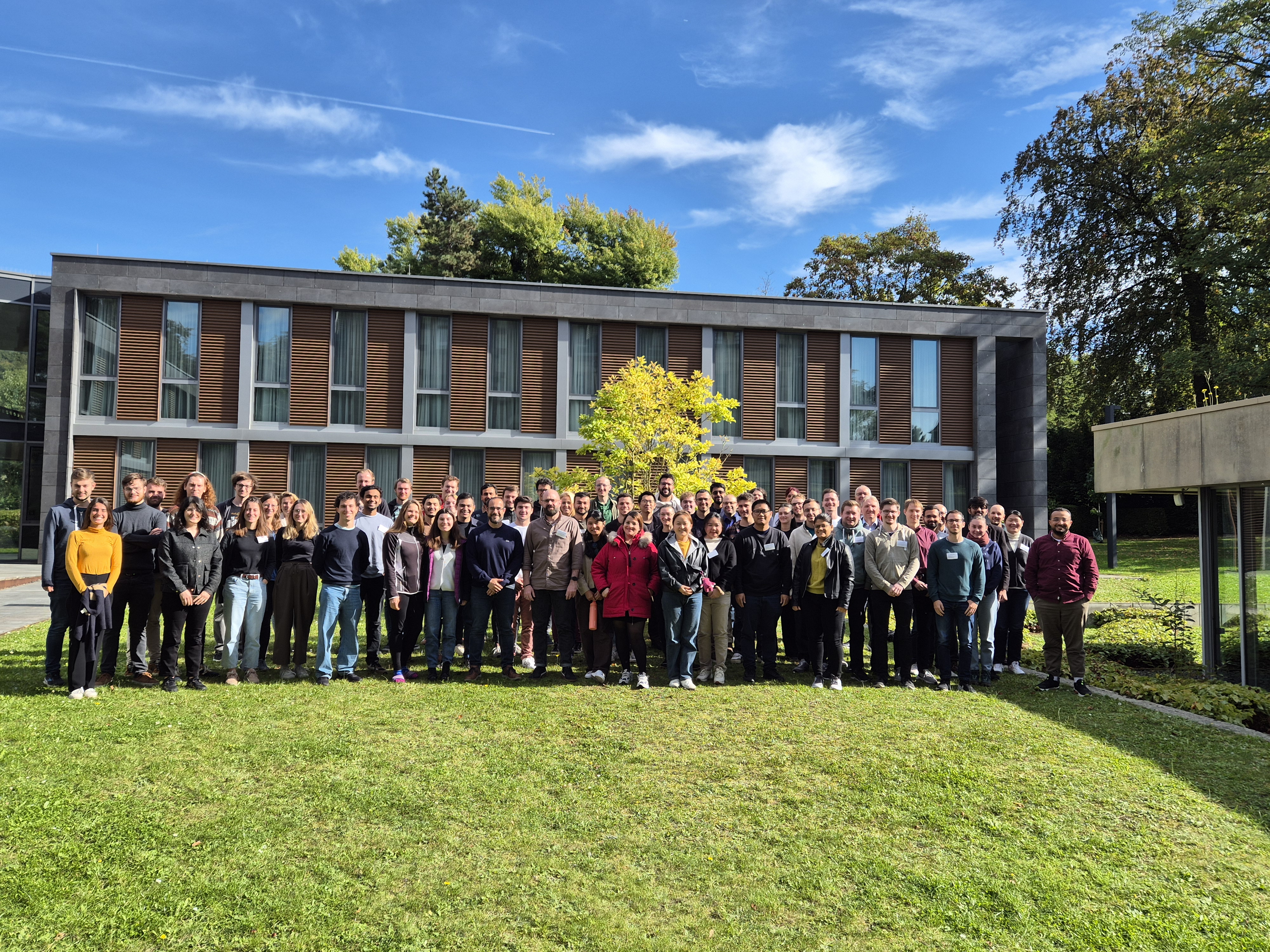 The 27th International Plasma School on "Low Temperature Plasma Physics: Basics and Applications," took place from October 5 to October 10, 2024, in Bad Honnef, Germany. The Master Class titled “Plasmas, Liquids, and Nanomaterials,” was held from October 11th to October 12th, 2024. For more information , please visit our website: www.plasma-school.org.
The 27th International Plasma School on "Low Temperature Plasma Physics: Basics and Applications," took place from October 5 to October 10, 2024, in Bad Honnef, Germany. The Master Class titled “Plasmas, Liquids, and Nanomaterials,” was held from October 11th to October 12th, 2024. For more information , please visit our website: www.plasma-school.org.
- Details
The biggest challenge is people's minds
Research data management - that sounds primarily technical. But a social component is also crucial, as plasma researcher Achim von Keudell knows to report.
At first glance, storing data in a structured and well-documented manner does not seem to be a challenge. But if you look at this task in detail, there are some hurdles to overcome. The team in Collaborative Research Center (CRC) 1316 "Transient Atmospheric Pressure Plasmas" has taken up the cause. SFB spokesman Prof. Dr. Achim von Keudell tells us in an interview why there were some thick boards to drill.
Professor von Keudell, why is research data management a challenge in your field?
Fifty percent of research in physics is done in large-scale research projects, such as in astrophysics or nuclear physics, where there are standards for data storage. The rest has been held in small laboratories. There, it is common for each group to use its own programs for data analysis or for creating graphics, or to use its own tools for data storage. In addition, the data from different experiments are very heterogeneous. The biggest challenge, however, is people's minds.
Why?
At first, many don't see the added value of research data management. They are worried that others could steal their data if it is handled too transparently. I have done a lot of promotion for the topic at conferences of the German Physical Society - and I was surprised how much convincing has to be done and what kind of resistance you have to fight against. It's a bit like telling a teenager "Clean your room" and getting the answer "Why? I can find everything."
Younger researchers are often open to research data management. Others often don't see the benefits at first, because they've gotten by for a long time without a standardized form of data storage and documentation. In the meantime, however, research funding organizations and scientific journals are demanding transparency.
Yes, the question of whether you have to make data accessible has not existed for one or two years. The German Research Foundation supports research data management, and you can no longer publish in many journals without publishing your data in a repository in parallel. Nevertheless, we still have a dormant treasure here that needs to be lifted.This is sustainable, especially when you consider that this data was produced with taxpayers' money.
In what way?
It's not just about publishing the data somehow, but doing it like this so that the next generation of researchers can continue to work with it. That's sustainable, especially considering that this data was produced with taxpayers' money.
In our Collaborative Research Center, for example, we have worked with colleagues to develop standards for metadata: When I perform a measurement, it is not only the results that are interesting. In order for someone to be able to reproduce the data later, it may also be relevant to know what the temperature was in the lab and which measuring device was used to make the recording. For various experiments, we discussed which metadata needed to be documented, and in the SFB we now use a common repository to store the data with uniform standards.
How easy was that to do?
We were able to build on good preliminary work from our colleagues at the Leibniz Institute INP in Greifswald, who had already given a lot of thought to the topic and recommended a particular open source software solution. However, as mentioned before, the data generated in different experiments is very different. Pouring that into a larger format that everyone is happy with is not easy. But we now have a system that about 50 people from different areas of plasma research - from engineered plasmas to biotechnology - are using, and we are continuously developing it.
In the meantime, something is changing in people's minds!
And how does the broad plasma community feel about the topic in the meantime?
In the meantime, we know that it is particularly convincing to present successful individual examples. If you only discuss at the level of FAIR principles, it remains too abstract. Concrete application cases help to convince people. And in the meantime, something is changing in people's minds!
Many now see the advantages. If we store data in a well-documented and accessible way, researchers can get access to a wide variety of measurements and perform cross-cutting analyses. This has not been done much before, but it enables completely new insights. It has crazy potential.
If you get involved early, you have the chance to help shape it!
What do you tell colleagues who are still skeptical?
That it's better to participate wholeheartedly from the start than to have to realize after ten years of resistance that there's no way around it anyway and that standards have been established that don't suit you. If you join in early, you have the chance to help shape things!
In the meantime, we know that it is particularly convincing to present successful individual examples. If you only discuss at the level of FAIR principles, it remains too abstract. Concrete application cases help to convince people. And in the meantime, something is changing in people's minds!
Many now see the advantages. If we store data in a well-documented and accessible way, researchers can get access to a wide variety of measurements and perform cross-cutting analyses. This has not been done much before, but it enables completely new insights. It has crazy potential.
If you get involved early, you have the chance to help shape it!
What do you tell colleagues who are still skeptical?
That it's better to participate wholeheartedly from the start than to have to realize after ten years of resistance that there's no way around it anyway and that standards have been established that don't suit you. If you join in early, you have the chance to help shape things!
adapted from Julia Weiler (RUB)
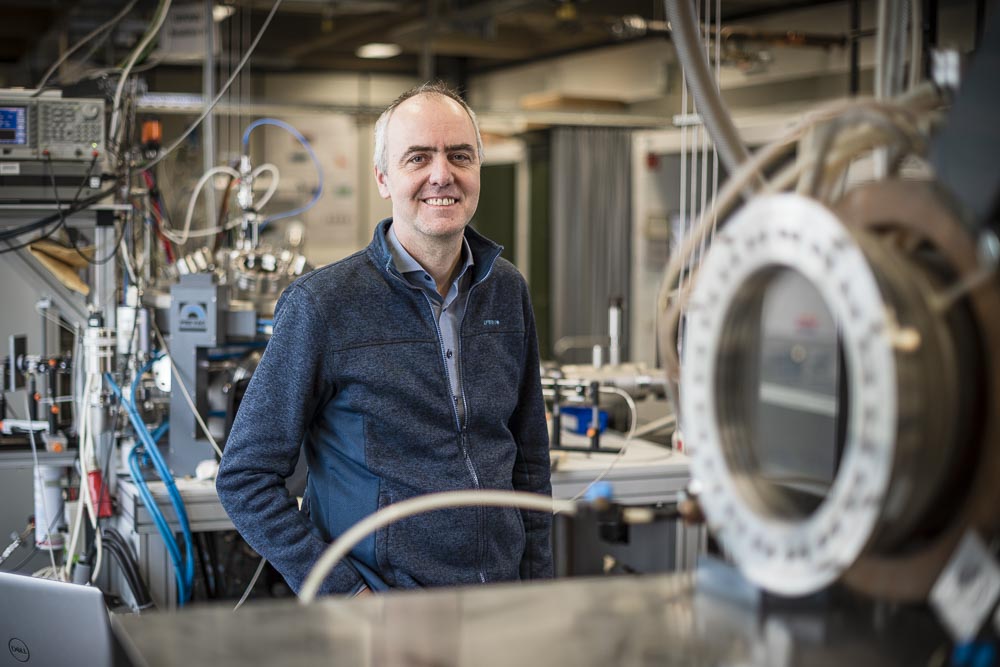
- Details
Young scientists benefit from international exchange
To control plasma-produced carbon monoxide and use its anti-inflammatory effects on wound healing is the aim of a cooperation between Professor Judith Golda from Ruhr University Bochum, Germany, and Professor Claire Douat from Université d’Orléans, France. In six mutual visits their groups experimented together, financed by the German Academic Exchange Service and by Campus France.
Ms. Golda, what would you like to achieve?
Judith Golda: Today plasma is not yet a well-understood, efficient and easy tool in medicine, I would say. We hope that in the future doctors can simply use a plasma-source to cure diseases of the skin.
For which medical applications is plasma already used?
Golda: A few hospitals in Germany are utilizing it for wound healing within clinical studies. Moreover, there are surveys for cancer therapy, sterilisation…
Claire Douat: … the treatment of teeth, skin diseases like psoriasis and acne, for cosmetics and blood coagulation, to avoid or reduce a bleeding.
How exactly does plasma work in wound healing?
Golda: There are different effects. One of them is sterilisation, another blood coagulation. Plasma can also increase the blood flow in the wound. And it can work anti-inflammatory by producing reactive species that resemble natural messenger substances.
In what way do your teams complement each other?
Golda: In France, the plasma source is a little bit different from ours. It produces more charged species in the vicinity of the treated substrate and a different mixture of chemical species, for example. On the one hand, we compare the plasma sources, on the other hand we exchange complementary diagnostics: In Orléans they use optical sensors for measuring the gas density – such as the one for carbon monoxide, in Bochum we employ mass spectrometry.
Why is it difficult to prove the impact of a single plasma component?
Douat: In a plasma there are many chemical reactions happening simultaneously. We have the electric field, reactive oxygen species and the light. So, it is not only difficult to explore but also to control it. At some concentrations those reactive species are beneficial, but at higher ones they can become toxic. In sterilisation or cancer treatment we want this toxicity, but in wound healing we don’t.
Now we have a lot of science to discuss.
– Claire Douat
What is characteristic of the cold atmospheric pressure plasma you use for the treatment of biological substrates?
Golda: Unlike other plasmas it stays cold enough not to harm the skin. The idea is to channel the energy we put in the plasma into the electrons to heat them. In this condition they are able to dissociate molecules and create reactive species while the gas remains close to room temperature. That is this non equilibrium character that everybody is talking of.
Which substrates do you use for your experiments?
Douat: Right now, we are utilizing bacteria. The next step will be on cells and afterwards on animals. But before, we need to make sure that the treatment is safe, for example that the electric current through the biological target is not too high.
What could you find out until now?
Douat: We performed electrical measurement and determined the concentration of some species in the different plasma-sources. For that we have one from Bochum in Orléans and they have one from us in Bochum. In the end, we treated bacteria to see the effects of the two plasma-sources: the bacteria didn’t behave in the same way when treated with diverse plasmas. Which is nice, because now we have a lot of science to discuss and are writing a paper about it.
Internationally, Ruhr University is a very well-known place for plasma research, with leading plasma and modelling experimental physicists.
– Claire Douat
Ms. Douat, what is your impression of Ruhr University?
Douat: I really like being in Bochum. Every time I come here, it’s easy. There is all this infrastructure with the hotel and everything I need in walking distance to university – including supermarkets and even a swimming pool.
From my point of view, when we are every day in the same place, we see things not the way we see them as a visitor. In Bochum they are well organised and there is always room for ease. Also internationally, Ruhr University is a very well-known place for plasma research, with leading plasma and modelling experimental physicists.
It’s fine to be here and to discuss with them. In addition, they have a big pack of experimental setup. I would not say everything, but a lot. When we want to test something, there is always a way to make it possible.
Golda: Also, the mensa has vegan and vegetarian options. One of the French students is vegetarian …
Douat: … and the view is great!
Sometimes it’s really inspiring to be in a new environment like another lab or university to get new ideas.
– Judith Golda
What are the advantages of your cooperation?
Golda: It’s a lot of fun. I like co-operating with Claire and her group. When you are working on a topic on your own, from time to time you get stuck on your ideas. In a cooperation we can discuss the issues and develop new ideas together. Sometimes it’s really inspiring to be in a new environment like another lab or university to get new ideas. In addition, Claire and her team have some expertise we don’t have.
Douat: It’s always fine to discuss and see another point of view. The students also work together and learn from each other. That’s a very good experience for them.
Golda: You really see how they grow. The first time the students go to France they are rather shy and seem kind of lost. The second time it’s like they feel at home there. The relationships between them change a lot and it’s awesome to watch them meeting at the weekend and spending free time together.
Douat: When we come to Bochum or our colleagues visit us in Orléans, it’s a bit like holidays, at least for Judith and me. Not in the sense that we wouldn’t work. We work a lot when we travel. But in that time, we have only one task to do, so we can focus on it. At home, we are busy with so many different things every day. Right now, we enjoy just to be at the laboratory, the whole day working on one project.
adapted from Carina Huber (RUB)

- Details
Plasma Physics for high school students
The project week for high school students is an educational program of the CRC 1316, the Faculty of Physics and Astronomy at the RUB and of zdi (Zukunft durch Innovation; Future through innovation). Which takes place twice a year.
From April 3-6 , the project week was hosted for 60 female students in grades 8 to 10. The girls chose be- between four workshops: plasma physics, astronomy, physics in medicine and sustainable house design. The project “From Plasma to Gold Layers” allows the students to gain an insight into the generation and applications of plasmas. Using the sputter coater and professional laboratory equipment, the students could deposit and examine gold layers themselves. During the project week, the students attended a lecture by Prof. Dr Judith Golda on “hands-on plas- mas – between material science and medicine“, and visited laboratories and the Planetarium Bochum. On the closing day, the results of the students’ research were presented in a poster session, followed by a quiz and lunch. The next project week in Autumn for female and male students in grades 8 and 9 will take place from October 9-13 .
The Faculty of Physics enables students to complete a school internship in Physics. From March 27-31, we welcomed two interns from grade 9. After a short introduction to plasma physics, the students worked on the sputter coater. They examined the coated samples. For this purpose, they determined the transmission with a spectrometer, the layer thickness with the profilometer and the conductivity. The interns also gained experience in handling data and in data evaluation. The goal of the internship is also to give an impression of laboratory work and current research. Therefore, doctoral students, bachelor’s and master’s students guided the interns through the labs and presented their experiments. The interns also visited the NRW state competition “Jugend forscht”, which took place at the Ruhr University Bochum March 27-29 .
The “mobile plasma workshop” took place for the first time on June 5, and visited an 11th-grade physics class in Essen. In the beginning, the students watched a short movie and received basic knowledge about plasmas and their applications. After a short quiz, they worked on the experiments in smaller groups. The students examined the light emitted by plasmas with an optical spectrometer and observed how electric and magnetic fields can influence plasmas. Information on the experiments on the students' tablets guided the workshop. The workshop was a success, and the students showed great interest. Through the students’ feedback, we have gained insights on how to improve our workshop going forward. 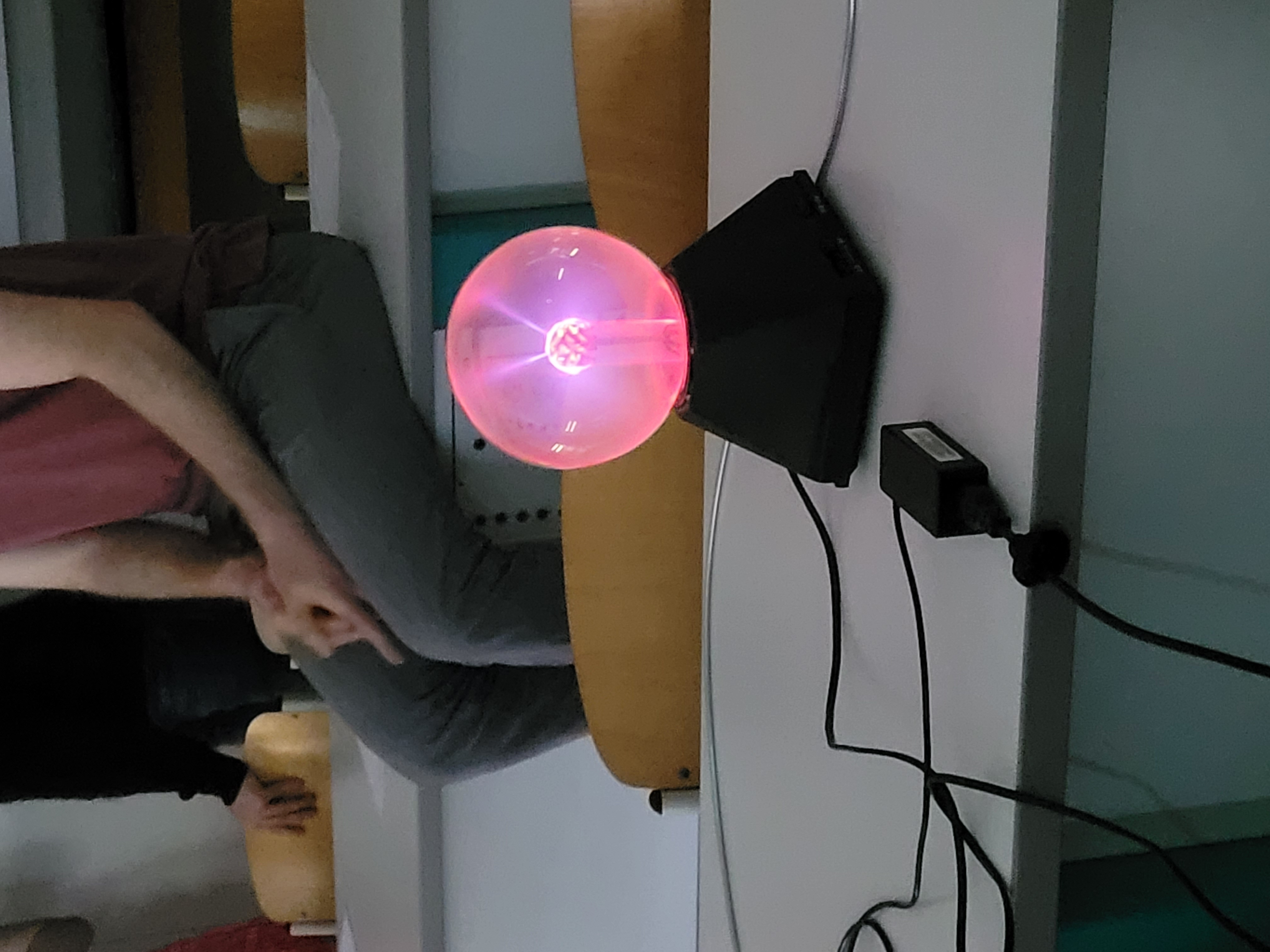
- Details
DAAD Exchange
Scientific results of DAAD exchange presented at ISPC 25
Prof. Judith Golda from RUB and Prof. Claire Douat from GREMI in Orléans have arranged several exchange visits between the groups with measurement cam- paigns in the respective laboratories within the frame- work of a DAAD exchange program (part of a PROCOPE project) and have already partially carried them out. The focus of the exchange is on the investigation of the role of CO in the treatment of biological substrates.
At the end of April, the French delegation consisting of Prof. Claire Douat, Eloise Mestre and Dr. Inna Orel was again in Bochum to measure rotational temperatures on the kHz-jet from Orléans. Here, with the support of Dr. Laura Chauvet as well as Daniel Henze in the labora- tory of Prof. Judith Golda, experimental results could again be obtained. In the end, several successful meas- urement campaigns were carried out over the last few visits. Therefore, the revisit was used to lay the foundation for a cooperative publication of the two groups, which will be submitted soon. Finally, Eloïse Mestre presented their results at the ISPC 25 conference in Kyoto, Japan.
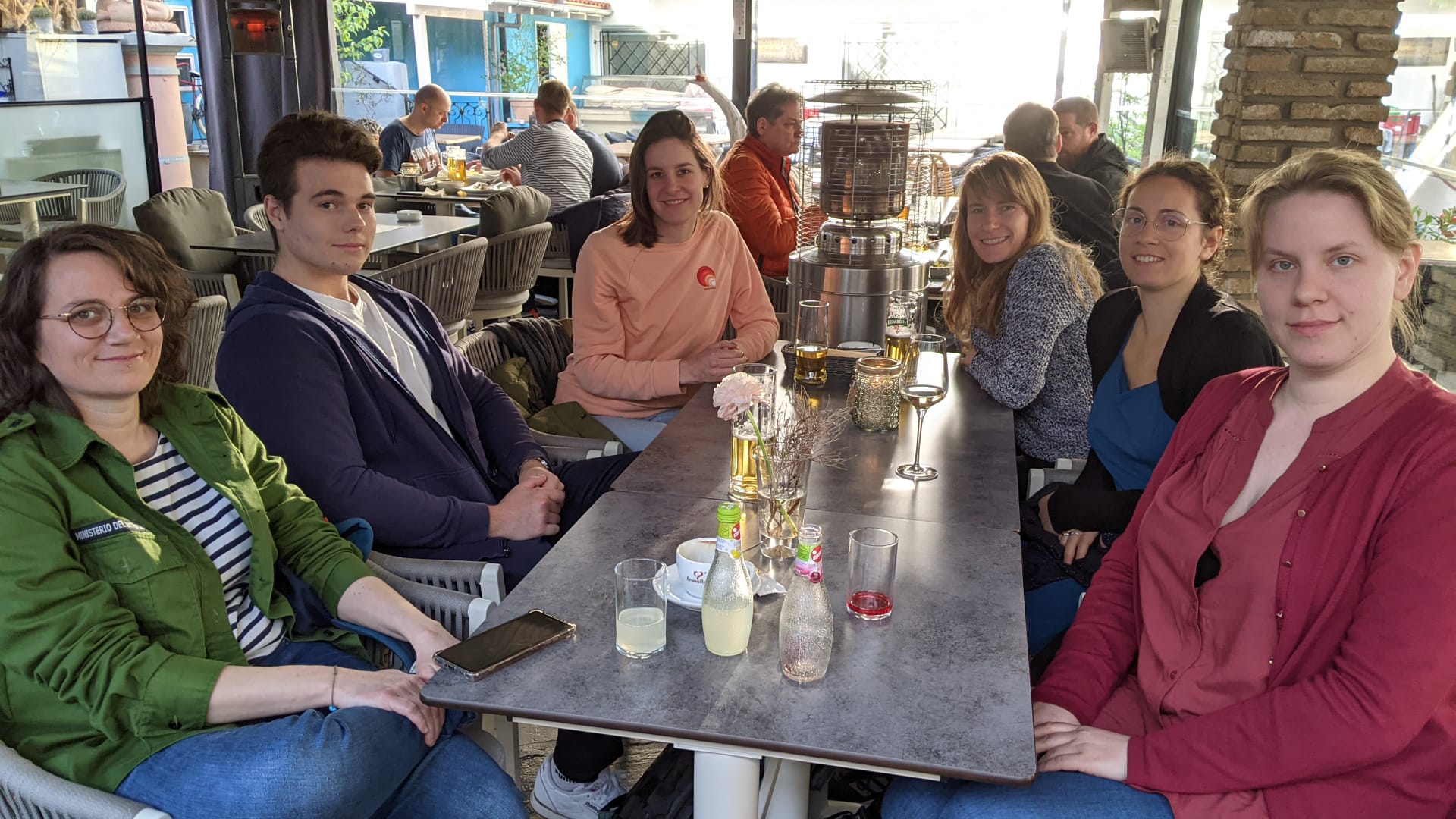
Dr. Laura Chauvet, Daniel Henze, Prof. Dr. Judith Golda (all from RUB), Prof. Dr. Claire Douat, Eloïse Mestre, Dr. Inna Orel (all from GREMI); from left to right
- Details
ISPC25 with the best oral presentation prize winner from RUB
The biennial international symposium on plasma chemistry was held in Kyoto, Japan at the end of May. A large delegation of Bochum plasma physicists and plas engineers attended the conference.
The conference covered most aspects of plasma from different fields: plasma medicine, plasma-based gas conversion, plasma in liquid, plasma process and material engineering, plasma spectroscopy and diagnostics, etc. The symposium provided a great opportunity to make new contacts and maintain relationships. The poster session was also very informative and provided a great opportunity to learn about the latest developments in plasma chemistry.
Overall, the 25th Symposium on Plasma Chemistry in Kyoto was a great success.
Congratulations to Simon Kreuznacht (EP2, RUB) for winning an award at the ISPC25 in Kyoto for his oral presentation on “Space resolved temperature measurements in an argon methane microwave plasma used for hydrogen production”. The Oral Presentation Awards are assigned to the best oral presentations provided by students.
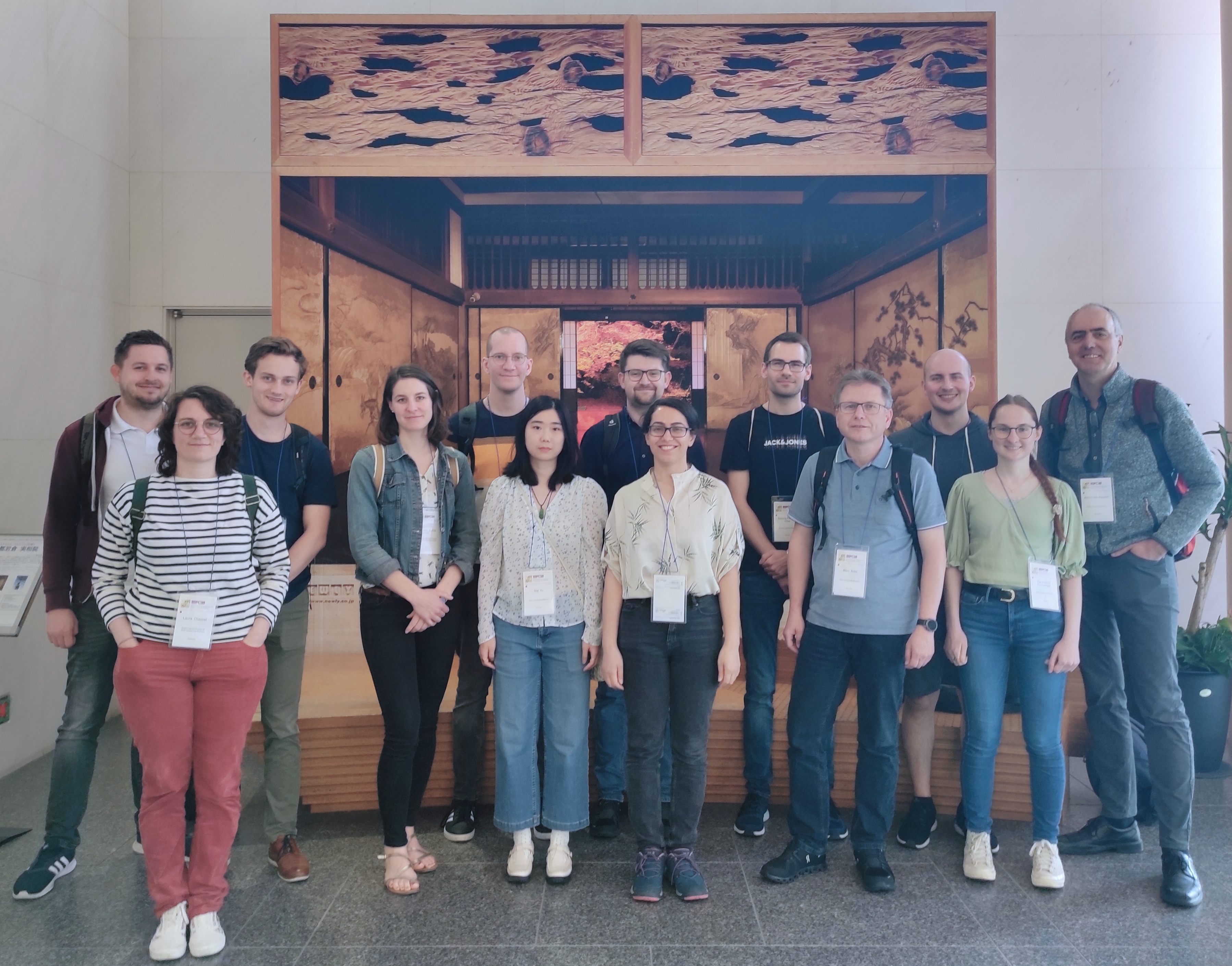
- Details
Conference
ISPC25 with prize winner for best oral presentation from plasma physics
The biennial international symposium on plasma chemistry was held in Kyoto, Japan, at the end of May. A large delegation of Bochum plasma physicists and plasma engineers attended the conference.
The conference covered most aspects of plasma from different fields: plasma medicine, plasma-based gas conversion, plasma in liquid, plasma process and material engineering, plasma spectroscopy and diagnostics, etc. The symposium provided a great opportunity to make new contacts and maintain relationships. The poster session was also very informative and provided an excellent opportunity to learn about the latest developments in plasma chemistry.
Overall, the 25th Symposium on Plasma Chemistry in Kyoto was a great success.
Congratulations to Simon Kreuznacht (EP2, RUB) for winning an award at the ISPC25 in Kyoto for his oral presentation on “Space resolved temperature measurements in an argon methane microwave plasma used for hydrogen production”. The Oral Presentation Awards are assigned to the best oral presentations provided by students.

- Details
Heraeus Seminar "Non thermal plasmas for sustainable chemistry"
The CRC 1316 was involved in the organization of the 785 WE Heraeus Seminar "Non thermal plasmas for sustainable chemistry" that was held in Bad Honnef 22.4.-27.4.2023. The meeting was organized by Yiguang Yu (Princeton), Tomo Nozaki (Tokyo Tech), Annemie Bogaerts (U Antwerp), and A. von Keudell (RUB, SFB 1316). The SFB 1316 contributed with two invited presentations and 6 posters. The seminar with 80 attendees provided a broad overview on the field and critical discusssions about the challenges and potential of plasma methods for sustainable chemistry.
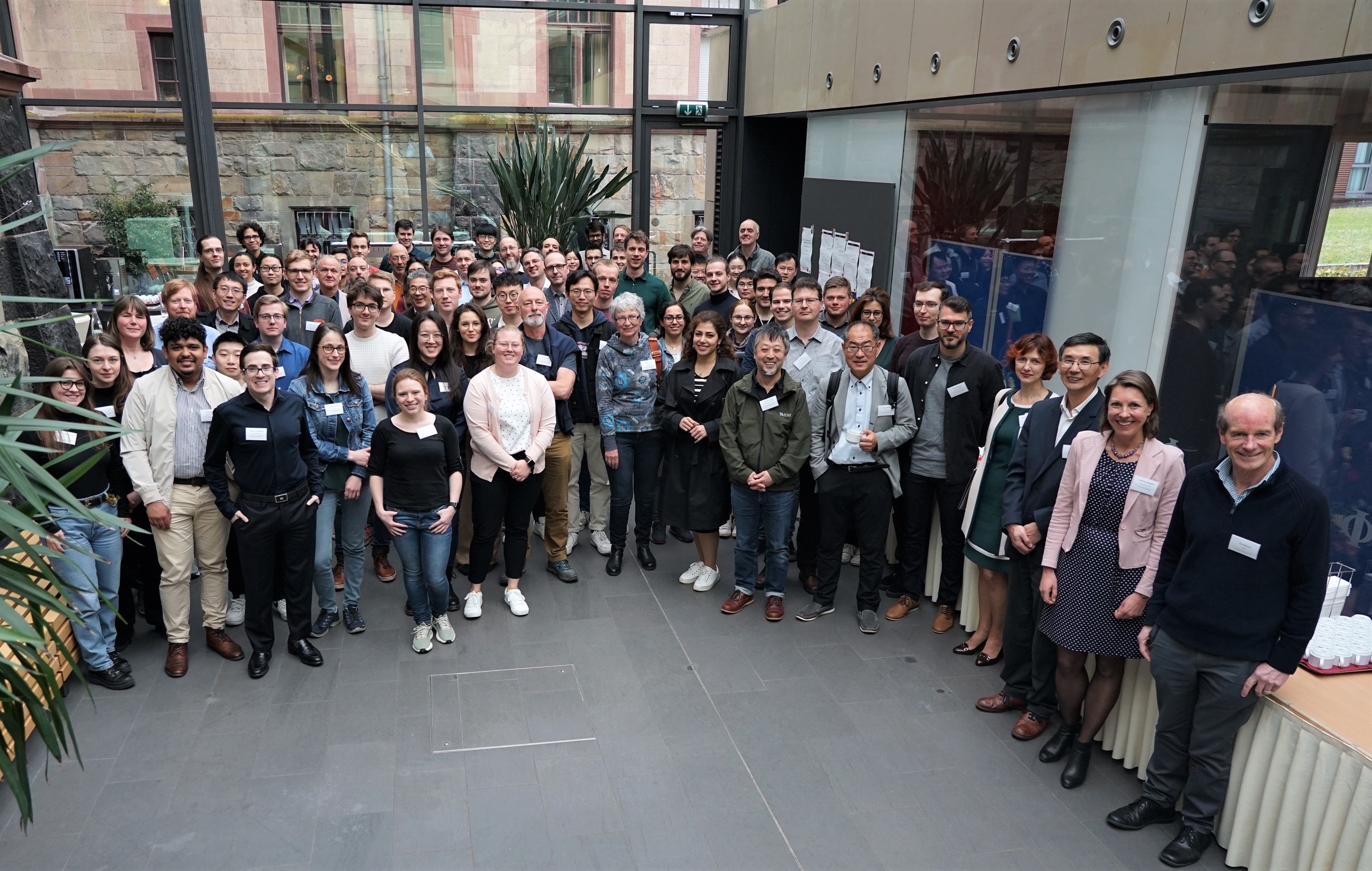
- Details
Guests
Visit of Prof. Katsuyuki Takahashi
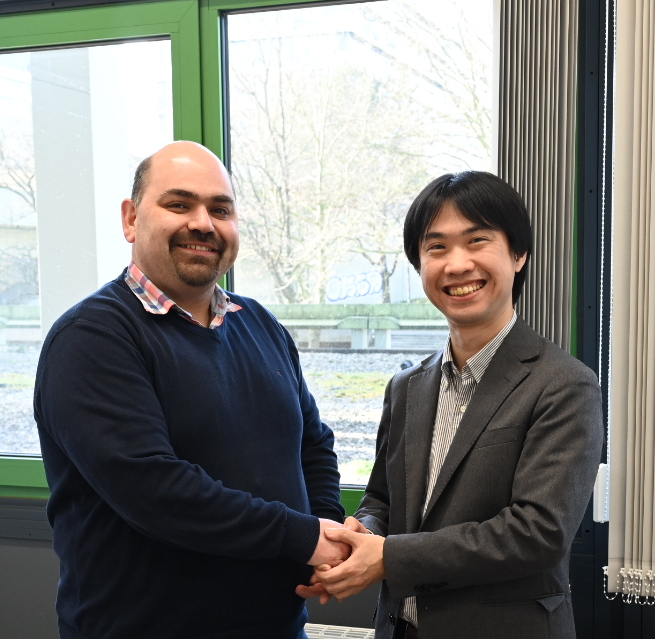 Assoc. Prof. Dr. Katsuyuki Takahashi (Iwate University, Japan) visited the Chair for Atomic and Plasma Physics (Prof. U. Czarnetzki).
Assoc. Prof. Dr. Katsuyuki Takahashi (Iwate University, Japan) visited the Chair for Atomic and Plasma Physics (Prof. U. Czarnetzki).
During his stay Prof. Takahashi visited the laboratories of many groups at RUB that are working within the CRC 1316. In a seminar talk Prof. Takahashi presented the various research topics that are covered by his group and the group of Prof. Koichi Takaki (Iwate University). These include pulsed non-thermal plasmas for enviromental and agricultural applications among others. The overlap in many of the topics could provide fruitful grounds for future collaborations between the Ruhr University Bochum and the Iwate University.
